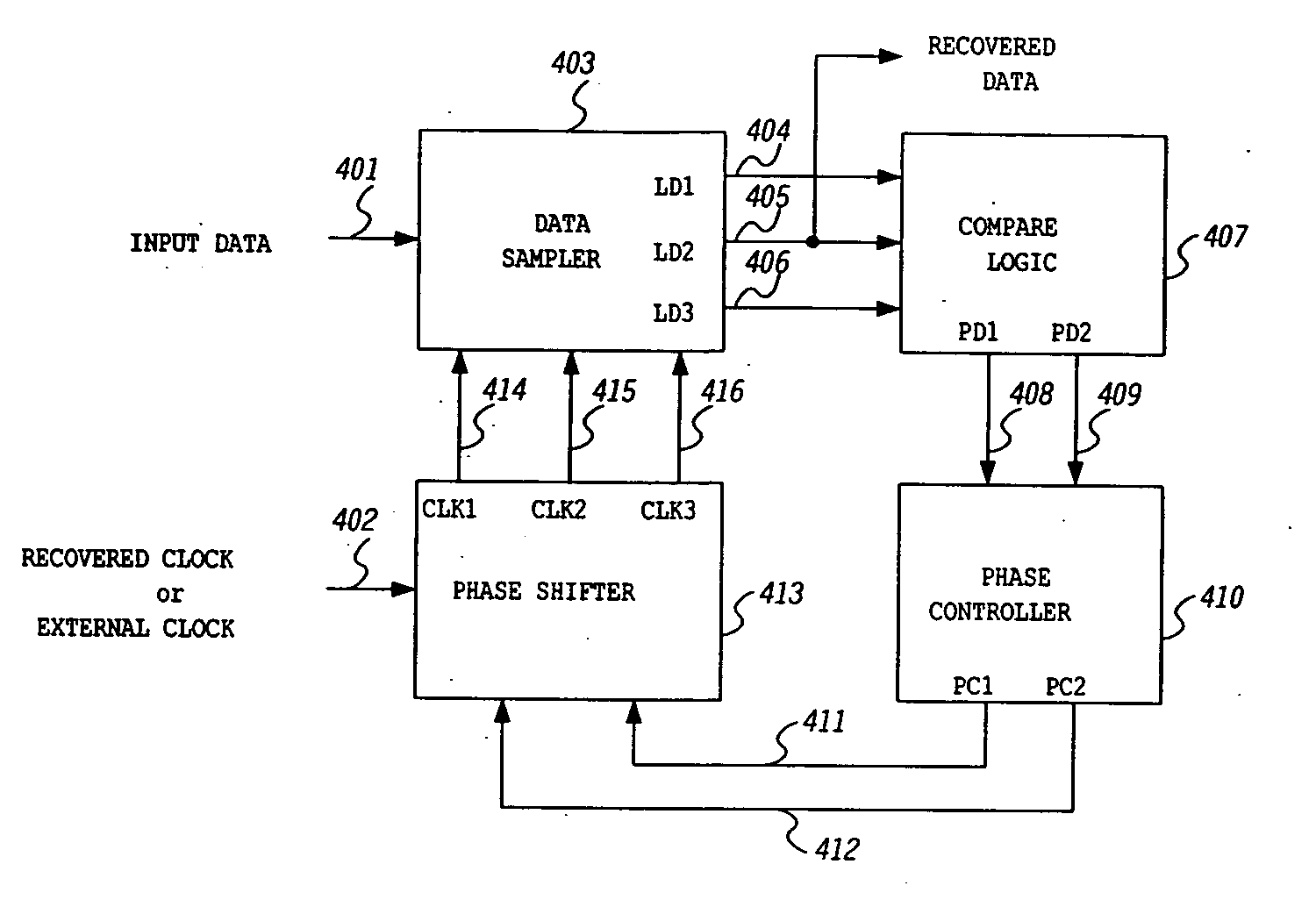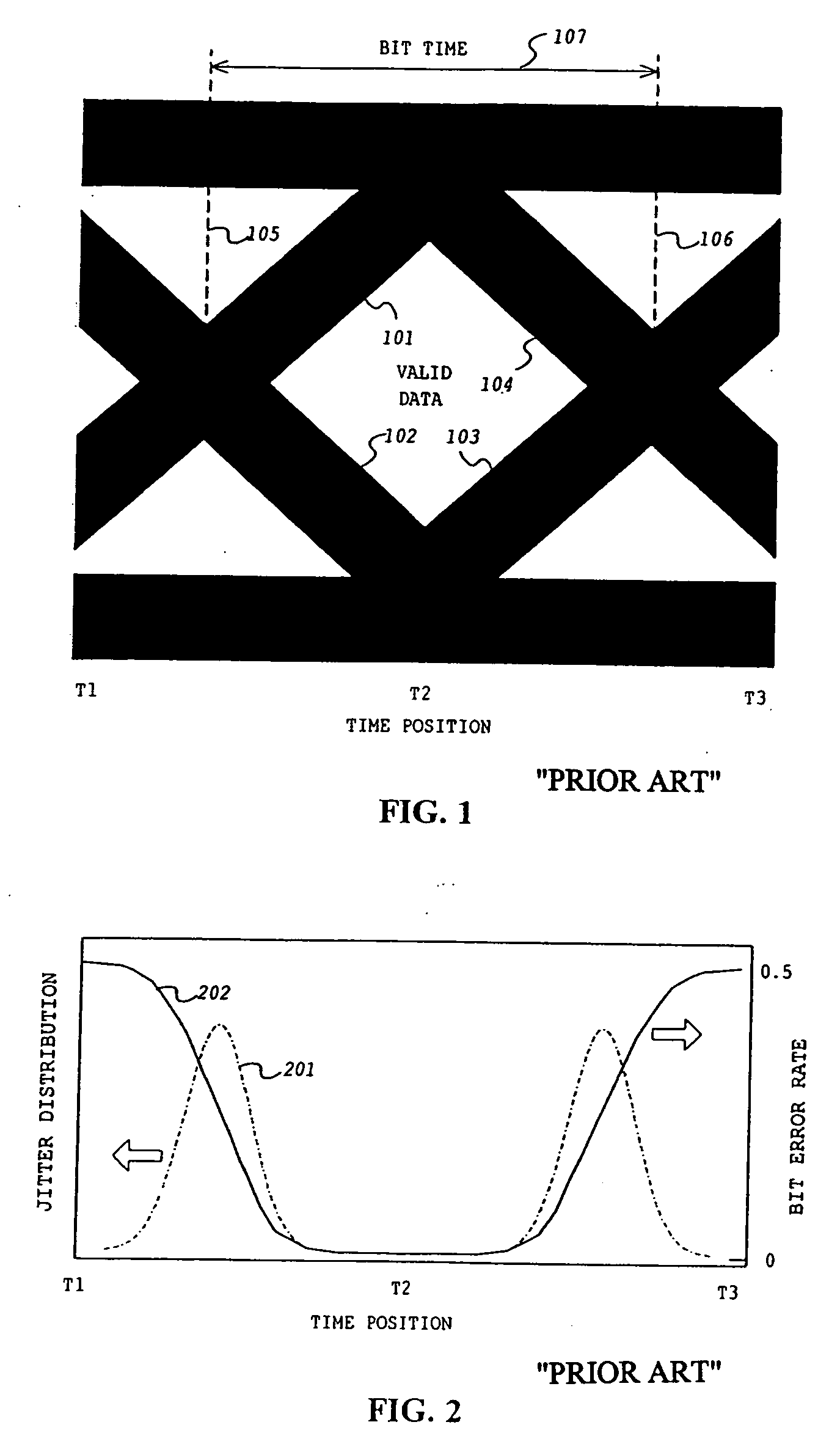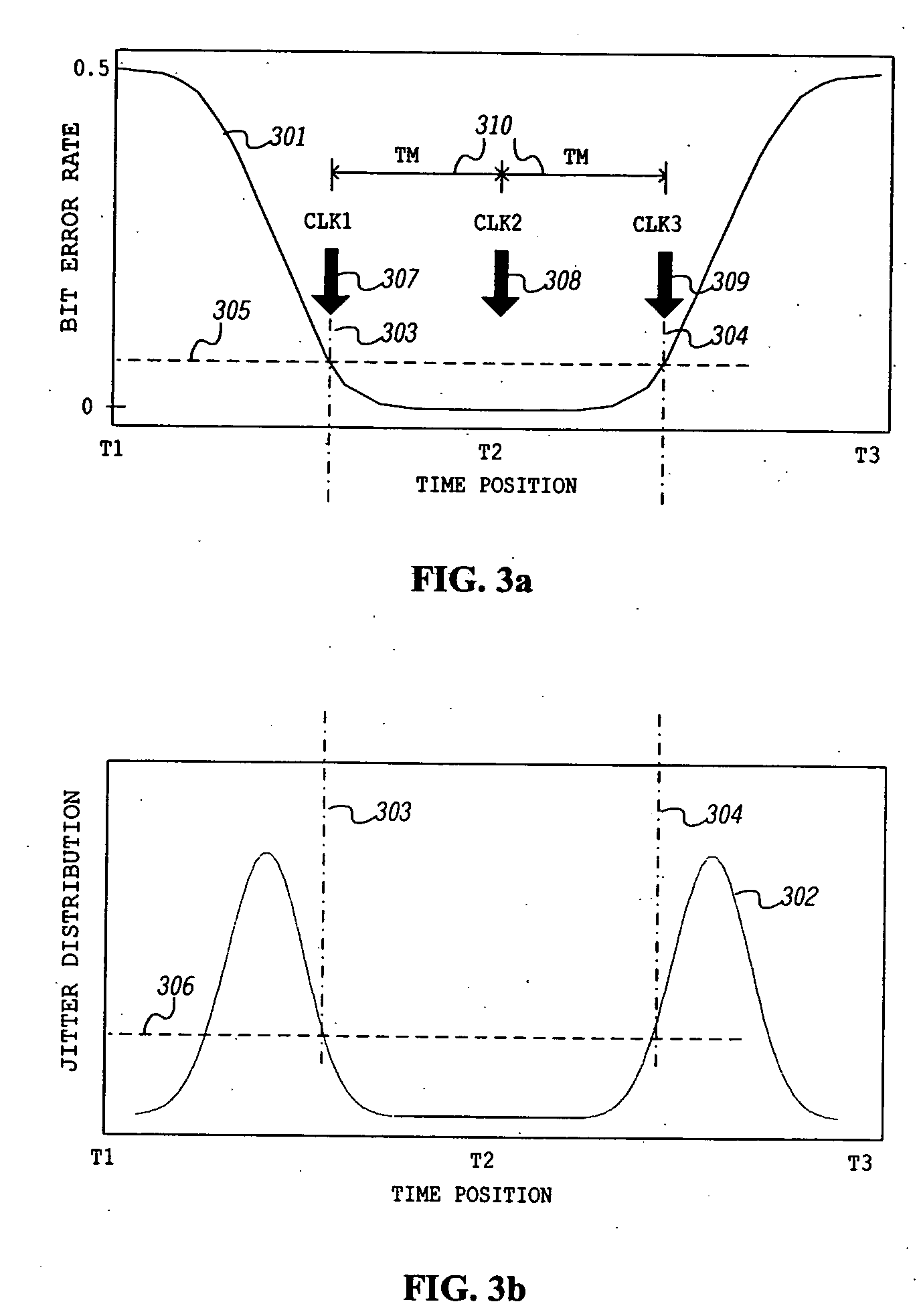Data recovery using data eye tracking
a data eye and eye tracking technology, applied in the field of data communication, can solve the problems of high nonlinearity, inability to correctly track the eye center, and dependence of analog signals on data patterns
- Summary
- Abstract
- Description
- Claims
- Application Information
AI Technical Summary
Benefits of technology
Problems solved by technology
Method used
Image
Examples
first embodiment
[0035]FIG. 7 shows phase shifter 413, including a phase delay(I) 707, a phase advance 708, and a phase delay (II) 709. Phase delay(I) 707 is used to adjust the phase of ‘CLK2’415 under control of ‘PC1’411. Phase delay 707 can be made up of a cascade of MOSFET inverters or a resistor-capacitor (RC) delay circuit, where ‘PC1’411 acts as the bias current or bias voltage. Phase advance 708 and phase delay (II) 709 are used to adjust the phase difference of ‘CLK1’414 and ‘CLK3’416 from ‘CLK2’415.
second embodiment
[0036]FIG. 8 shows the phase shifter 413, which comprises four variable delays 801, 804, 805, 808 and further comprises a phase detector and a loop filter 806. Variable delay(I) 801 is controlled by ‘PC1’411 and adjusts the phase of its output 802. Variable delay(II) 804, variable delay(III) 805, and phase detector and loop filter 806 make up delay-locked loop 803, which makes the phase of ‘CLK2’415 tracks the phase of variable delay(I)'s output 802. Variable delay(III) 805 is controlled by ‘PC2’412 and adjusts the phase difference between ‘CLK1’414 and ‘CLK2’415. Variable delay(IV) 808 is a replica of variable delay(III) 805 and is also controlled by PC2’412. Therefore, the phase difference between ‘CLK2’415 and ‘CLK3’416 is the same as that between ‘CLK1’414 and ‘CLK2’415.
third embodiment
[0037]FIG. 9 shows phase shifter 413. It comprises variable delay 901, phase distributor 903, multiplexer(I) 907, multiplexer(II) 909, buffer 908, and selection logic 910. Variable delay 901 has the same function as variable delay(I) 801 in FIG. 8. Phase distributor 903 is a kind of delay-locked loop or phase-locked loop that makes multiples of different phase clocks 904, 905, 906, where the phase of 905 tracks the phase of 902. Here 904 is a bundle of clocks that lead 905 in phase, where the amount of phase leading lies between zero and half bit time. Selection logic 910 controls multiplexer(I) 907 so that it passes one of multiple input clocks 904. Therefore, the phase difference of ‘CLK1’414 and ‘CLK2’415 can be adjusted by ‘PC2’412. Bundle of clocks 906 that lag 905 in phase are input to multiplexer(II) 909, where one of those is selected so that the phase difference between ‘CLK2’415 and ‘CLK3’416 is the same as that between ‘CLK1’414 and ‘CLK2’415. The purpose of buffer 908 is...
PUM
 Login to View More
Login to View More Abstract
Description
Claims
Application Information
 Login to View More
Login to View More - R&D
- Intellectual Property
- Life Sciences
- Materials
- Tech Scout
- Unparalleled Data Quality
- Higher Quality Content
- 60% Fewer Hallucinations
Browse by: Latest US Patents, China's latest patents, Technical Efficacy Thesaurus, Application Domain, Technology Topic, Popular Technical Reports.
© 2025 PatSnap. All rights reserved.Legal|Privacy policy|Modern Slavery Act Transparency Statement|Sitemap|About US| Contact US: help@patsnap.com



